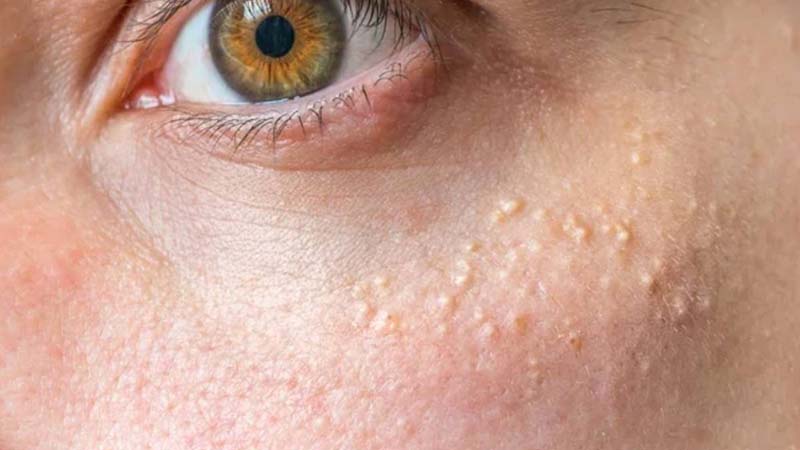Introduction
Milialar is a skin condition that many people may have heard of, but not fully understand. It often manifests as small white bumps on the skin and can occur in anyone, regardless of age or gender. In this article, we will delve into the causes, symptoms, and possible treatments for milialar, helping you gain a better understanding of this common skin concern.
Causes of Milialar
Though the exact cause of milialar is not fully understood, there are several factors that are believed to contribute to its development. These include:
- Excessive production of keratin, a protein found in the skin
- Blockage of the sweat ducts
- Inherited genetic factors
- Long-term use of certain medications, such as steroids
- Blistering skin conditions
While these factors may increase the likelihood of developing milialar, it’s important to note that anyone can be affected by this condition.
Symptoms of Milialar
The most common symptom of milialar is the appearance of small white or yellowish bumps on the skin, typically measuring about 1-2 millimeters in diameter. These bumps may appear on the face, especially around the eyes, cheeks, and nose, but can also appear on other parts of the body.
Unlike other skin conditions, milialar bumps are firm to the touch and do not easily rupture or cause pain. Although they are often harmless, some individuals may experience mild itching or discomfort around the affected areas.
Treatment Options for Milialar
There are various treatment options available for milialar, depending on the severity of the condition and the individual’s preferences. Some possible treatments include:
1. Manual extraction
In this procedure, a dermatologist or aesthetician uses a sterile needle or comedone extractor to carefully puncture and remove the individual milialar bumps. This is typically done after the skin has been cleansed and prepared with a topical anesthetic to minimize pain and prevent infection.
2. Topical retinoids
Topical retinoids, such as tretinoin or adapalene, are derived from vitamin A and are commonly used to treat various skin conditions. When applied to the affected areas, they help to exfoliate the skin and unclog the blocked pores, leading to the disappearance of milialar bumps over time.
3. Chemical peels
Chemical peels involve applying a solution containing acid to the skin, causing the outermost layer to peel off and promote the growth of new skin cells. This type of treatment can effectively reduce the appearance of milialar bumps and improve overall skin texture.
4. Microdermabrasion
Microdermabrasion is a non-invasive procedure that uses a device to gently exfoliate the skin, removing the top layer of dead skin cells. This treatment can help reduce the appearance of milialar bumps by promoting cell turnover and unclogging the pores.
5. Laser therapy
Laser therapy is a more aggressive treatment option that may be used in cases of persistent or severe milialar. The laser targets and destroys the blocked sweat ducts, allowing the bumps to gradually disappear. This procedure is typically performed by a trained dermatologist.
6. Prevention and self-care
Prevention and self-care are essential in managing milialar. Some tips to keep in mind include:
- Gently cleanse your skin daily with a mild cleanser
- Avoid using heavy or greasy skincare products that may clog the pores
- Protect your skin from excessive sun exposure
- Avoid picking or squeezing milialar bumps, as this can lead to scarring or infection
Conclusion
Milialar is a common skin condition characterized by small white or yellowish bumps on the skin. While the exact cause of milialar is not fully understood, factors such as excessive production of keratin and blockage of sweat ducts are believed to contribute to its development. Fortunately, there are several treatment options available, including manual extraction, topical retinoids, chemical peels, microdermabrasion, and laser therapy. Additionally, practicing prevention and self-care can help manage milialar and promote overall skin health. If you suspect you have milialar or any other skin concern, it is always recommended to consult with a dermatologist for a proper diagnosis and treatment plan.
Also Read: Discover The Power Of Hanume

